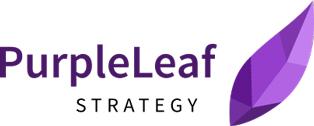Eight components of effective brand planning tools

Daniel Kohlstaedt, managing director and founder of PurpleLeaf Strategy, outlines the key elements brand planning platform technology must have to help brand teams optimise their strategies.
Amidst pharma’s digital transformation, many companies have adjusted their workflows to incorporate more data- and technology-enabled tools into their decision-making processes. Every industry conference includes discussions on how to use artificial intelligence (AI) and machine learning (ML) to better understand patient behaviour, or how omnichannel can improve engagement across stakeholders. But, in the case of brand planning, which lays the foundation for every customer-centric omnichannel strategy, how do we know which tools will help teams build dynamic, impactful strategic plans across geographies?
Just as there are many elements of brand planning for teams to address at the global and local levels, tech-powered brand planning tools must fulfil a number of key criteria to be effective in brand strategy development. After almost two decades working with biopharma on their brand planning – both from within the industry and as a partner – I've identified several must-haves for powerful brand planning platforms.
To support brand teams in building and optimising their brand strategies, technologies must:
Be cloud-based
First and foremost, brand planning platforms need to use a database structure which is accessible through cloud-based tools. Gone are the days of e-mailing spreadsheets and PowerPoint decks between colleagues to disseminate brand plans; not only is this method inefficient, but it poses access and version control issues. By deploying brand planning technology in a cloud-based environment, brand teams can ensure all relevant team members can work with the most up-to-date versions of strategic plans in a secure, accessible setting.
Feature modular functionality and customised views
Brand planning involves many colleagues with varied roles and responsibilities for strategy development – in their region or around the world. As a result, different brand team members are responsible for different elements of the brand strategy development process, and the technologies they use to streamline their work should adapt according to their needs. With a modular platform, different teams can customise and combine different modules to best fit to their priorities.
Ensure consistency across geographies
Once global teams circulate brand plans to local affiliates, local teams may implement and measure the success of plans in different ways. For example, one country may use a spreadsheet to track their progress, while another may enter data across slides in a deck. If these templates aren’t interoperable, it can be difficult for global leaders to aggregate and review progress across regional implementations. Therefore, any technology used must ensure global-to-local consistency, meaning it helps local teams to enter data in a uniform way that enables a more streamlined view of plans and progress at a global level.
Amass data in a single, strategic database
Data is a critical piece of any brand plan. To build a strategy, one brand team may need to leverage data from many sources, in a variety of formats – including customer relationship management systems, segmentation maps, and others – to capture all of the information needed to build a comprehensive strategy. By combining all this data into a centralised database within a brand planning platform, with all insights and decisions stored in one place, brand teams can query all their data at once to enable better informed decisions, faster.
Display data in easy-to-read dashboards
With all data aggregated in a single database, brand planning platforms can visualise key data points into dashboards. These easy-to-read views allow reviewers to see the progress of global and local plans, and compare metrics across different brands, regions, demographics, and therapeutic areas.
Pre-populated data to streamline decision-making
To streamline data entry and improve decision-making capabilities, brand planning databases can also pre-populate templates with relevant data points. This makes it easier for local and global teams to plug the latest data into their workflows, then make it available for other colleagues to view and query.
Modernise SWOT and PEST analyses
SWOT and PEST analyses are two tried-and-true methods of assessing the market, traditionally done in slide format to simulate market factors from two different angles. A SWOT analysis gains a high-level view of the drivers of and barriers to success for a brand, including how well a brand is perceived against competitors in the eyes of customers. A PEST analysis dives deeper to determine those drivers and barriers by questioning the political, economic, social, and technological factors that may impact a market or brand environment. Quality brand planning technologies can help modernise these assessments, leveraging data – both from a brand’s own dataset and from external sources like clinical trial databases – to demonstrate the trigger points, opportunities, and challenges a brand may face in the real world.
Enable logical and intuitive flow between exercises
To make the brand planning process easier for brand teams, the platform they use should build workflows based on logic. For example, templates can use questions to prompt users with the right information to enter, and information pathways should connect key elements of brand strategy development – such as tactical spends with objectives. These factors not only simplify the planning process: they ensure optimal strategy development.
The future of brand planning is in the cloud
In my years in the brand planning space, I’ve found that brand teams benefit from simplicity. While the effort of developing a comprehensive brand strategy is complex, technologies and platforms can automate key elements of the process to streamline and simplify work for the team.
In the absence of a platform that could incorporate all of the elements listed above into one solution, we launched Enavia to bring brand planning into the cloud. I’ve had the pleasure of discussing the ways our technology can support pharma companies around the world at the recent Reuters Pharma events in Philadelphia, USA and Barcelona, Spain, and I look forward to continuing the conversation with brand teams at NEXT Pharma Summit on the 16th and 17th of May in Dubrovnik, Croatia. Come meet us at booth #3 to learn more about how you can make brand planning easier for your teams.
About the author
 Daniel Kohlstaedt is founder and managing director of PurpleLeaf Strategy and has over 19 years’ extensive experience in commercial excellence and global marketing implementation. He is an expert in global roll-out.
Daniel Kohlstaedt is founder and managing director of PurpleLeaf Strategy and has over 19 years’ extensive experience in commercial excellence and global marketing implementation. He is an expert in global roll-out.
About Purple Leaf Strategy

At PurpleLeaf Strategy we strive to help Pharma and Biotech businesses achieve their commercial goals through our cloud-based platform, Enavia. Through structured cloud-based systems, Enavia guides teams through brand strategy development and execution on many fronts. Automated data collection and sharing, analytics through modular tools, and planning & execution through interrogative exercises help business in their go-to-market strategies and commercial excellence. Tools like Relative Competitive Analysis, Patient Flow and Journey, Timeline Dynamics, and many more help in pulling actionable levers for commercial success.
Get the benefit of our highly experienced professionals and tools, custom made for you. Visit www.enaviahub.com or write to us at contact@purpleleafstrategy.com for a demo.











